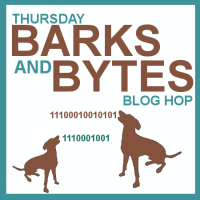Did You Know: Calgary Has Leash Laws
August 25, 2012 17 Comments
Yesterday the hot topic in local news and social media was the story of a person walking his/her dogs off-leash in an on-leash area at Nose Hill Park: one of the dogs got caught in a toothless trap designed to catch coyotes for a University of Calgary research study, performed in conjunction with the City of Calgary.
Those are the facts and you can check out the hyperlinks for more details.
Outrage ensued, Twitter and Facebook fired up, and complaints were made to the City, the University, and the Humane Society, such that the study was put on pause less than 24 hours after the incident.
If you ask me, this seems like blaming a car for hitting you when you purposefully walk into oncoming traffic.
The dog was off-leash… in an on-leash area. The traps were specifically put in densely wooded on-leash areas (and are only active between sunset and sunrise) to prevent this very thing. And to suggest a child could get caught in them as well (as I’ve seen some do) is just hyperbole.
One affronted person tweeted an Alderman to ask what bylaws apply to this situation.
Let me tell you: Bylaw Number 23M2006, section 12, which states owners of dogs shall ensure they are not running at large, meaning off-leash, not under control, and can still include on-leash dogs if they cause harm or distress to others.

Alma and Moses in Nose Hill Park. Note the leashes, the close proximity to me as I take photos, and the controlled sit-stay.
This dogs-at-large rule applies to both on-leash and off-leash areas. So yes, that even means if you can’t control your dog at the dog park – have them come in when you call, for example – that is still considered “at large” even if it’s a designated off-leash area.
Outside of designated off-leash areas, dogs are to be on leashes no more than 2 metres long (that means, yes, flexi-leashes are against bylaw!). While on city pathways, dogs are to walk on your right-hand side away from oncoming pedestrians, bikes, and other dogs, and are not to interfere with others. It’s all in the bylaw; did I just blow your mind?
As for the case at hand, the University research team posted signs in the parks at least 50 metres from the traps. This means as the owner was reading the sign, the dogs was out of sight and 50 metres away – not under control or on-leash, and therefore definitely at large.
Nose Hill Park frequently has signs posted warning of studies, surveys, animal warnings, and pesticide sprays.
Now I know most signage gets ignored – Caution, Hot! Wet Paint. Please Use Other Door. Cash Only. Out of Order. Slippery Floors – but as a responsible dog owner using a large park that is famous for coyotes (obviously, hence the study), deer, and porcupines, caution and awareness should be your priority.
Rather than throwing the hammer down on the City and the University for undertaking a study that undoubtedly will have interesting results that are beneficial to dog owners (lots of little dogs lose their lives to coyotes in that very park every year), I’d prefer to see this situation touted as an educational opportunity to better inform the public about leash laws, training, and responsible pet ownership.
Because the bottom line is that if the dog was on-leash as it should have been, this never would have happened.
Geez, pair this with the Nose Hill Gentlemen incident and perhaps it’s better to avoid that park altogether. (I jest.)
As a dog owner, it is your responsibility to look out for your dog’s safety and wellbeing at all times. That means staying on-leash in on-leash areas, observing pet bylaws, undergoing training, and being realistic about the control and supervision you have in off-leash situations. If you can’t guarantee their safety, don’t take the risk.
Not to mention, it’s irresponsible or unaware owners who ruin it for the rest of us by creating valid complaints about this city’s dog owners and their perceived lack of care and attention to park and pathway etiquette and bylaws.
These are the very bylaws that earn Calgary international praise for our Responsible Pet Ownership mandate and help keep unfortunate dog incidents out of the news, but that doesn’t mean very much if no one knows about them or abides by them.
The good news is that the dog in question walked away from the incident free of harm, but unfortunately, in my opinion, the media and commentary surrounding the story has missed the lesson entirely.









